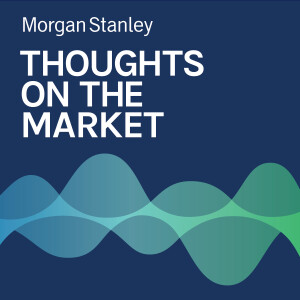
Mid-Year U.S. Dollar Outlook: An Important Driver for Returns
 2023-06-23
2023-06-23
This year, foreign exchange has been even harder than usual to predict. Even so, the outlook for the U.S. Dollar may prove to be a handy asset moving forward.
----- Transcript -----
Welcome to Thoughts on the Market. I'm Dave Adams, Head of G10 Foreign Exchange Strategy at Morgan Stanley. And today I'll be talking about our outlook for the U.S. dollar and why it may prove an important driver of investor returns this year. It's Friday, June 23rd at 3 p.m. in London.
Foreign exchange has long been known as a hard asset class to predict, and this year has proven to be even harder than usual. Consensus trades left and right have missed the mark, and both disagreement and uncertainty are the highest we've seen in years.
So where do we go from here? We think the U.S. dollar is going to keep rallying, rising about 5% or so by the end of the year. Central bankers are likely to keep their feet on the brakes in order to tackle inflation. And in doing so, growth is likely to remain anemic, with risks skewed to the downside.
Against this backdrop, we think two key themes are going to emerge: demand for carry and demand for defense. Carry is attractive in a slow growth world and is likely to explain a lot more of investor returns if prices don't move very much. And defensiveness is an alluring quality in financial assets when optimism is low, uncertainty is high and risks abound.
It's pretty rare to find a financial asset that offers both of these qualities. Typically, insurance costs you money. But the good news is that the US dollar does. The dollar tends to be negatively correlated versus the equity market, meaning that when equities go down, the dollar goes up, and that relationship has only strengthened in recent years.
Meanwhile, U.S. rates are elevated versus the rest of the world thanks to Fed rate hikes. Dollar rates are roughly 2% higher than those in Europe and even 5% higher compared to those in Japan.
Foreign exchange is a relative game, and if investors are buying the dollar, they're probably selling something. We think in this high uncertainty environment currencies which are most sensitive to growth and risk assets would likely weaken the most. In the G10 space, the Australian dollar and the Swedish krona both look vulnerable here, while in emerging markets that's probably the South African rand and the Chinese renminbi.
There are plenty of potential risks on the horizon to keep investors worried; banking sector volatility, geopolitical risks, sticky inflation, just to name a few. As the investment outlook remains cloudy and hazy, the U.S. dollar is a handy asset to keep in the portfolio as a positive carry insurance hedge.
Thanks for listening. If you enjoy the show, please leave us a review on Apple Podcasts and share Thoughts on the Market with a friend or a colleague today.
More Episodes
 2024-11-08
2024-11-08
 2024-11-07
2024-11-07
 2024-11-05
2024-11-05
 2024-11-01
2024-11-01
 2024-10-31
2024-10-31
 2024-10-30
2024-10-30
 2024-10-29
2024-10-29
 2024-10-28
2024-10-28
 2024-10-25
2024-10-25
 2024-10-23
2024-10-23
 2024-10-22
2024-10-22
 2024-10-15
2024-10-15
 2024-10-14
2024-10-14
Create your
podcast in
minutes
- Full-featured podcast site
- Unlimited storage and bandwidth
- Comprehensive podcast stats
- Distribute to Apple Podcasts, Spotify, and more
- Make money with your podcast
It is Free
- Privacy Policy
- Cookie Policy
- Terms of Use
- Consent Preferences
- Copyright © 2015-2024 Podbean.com




